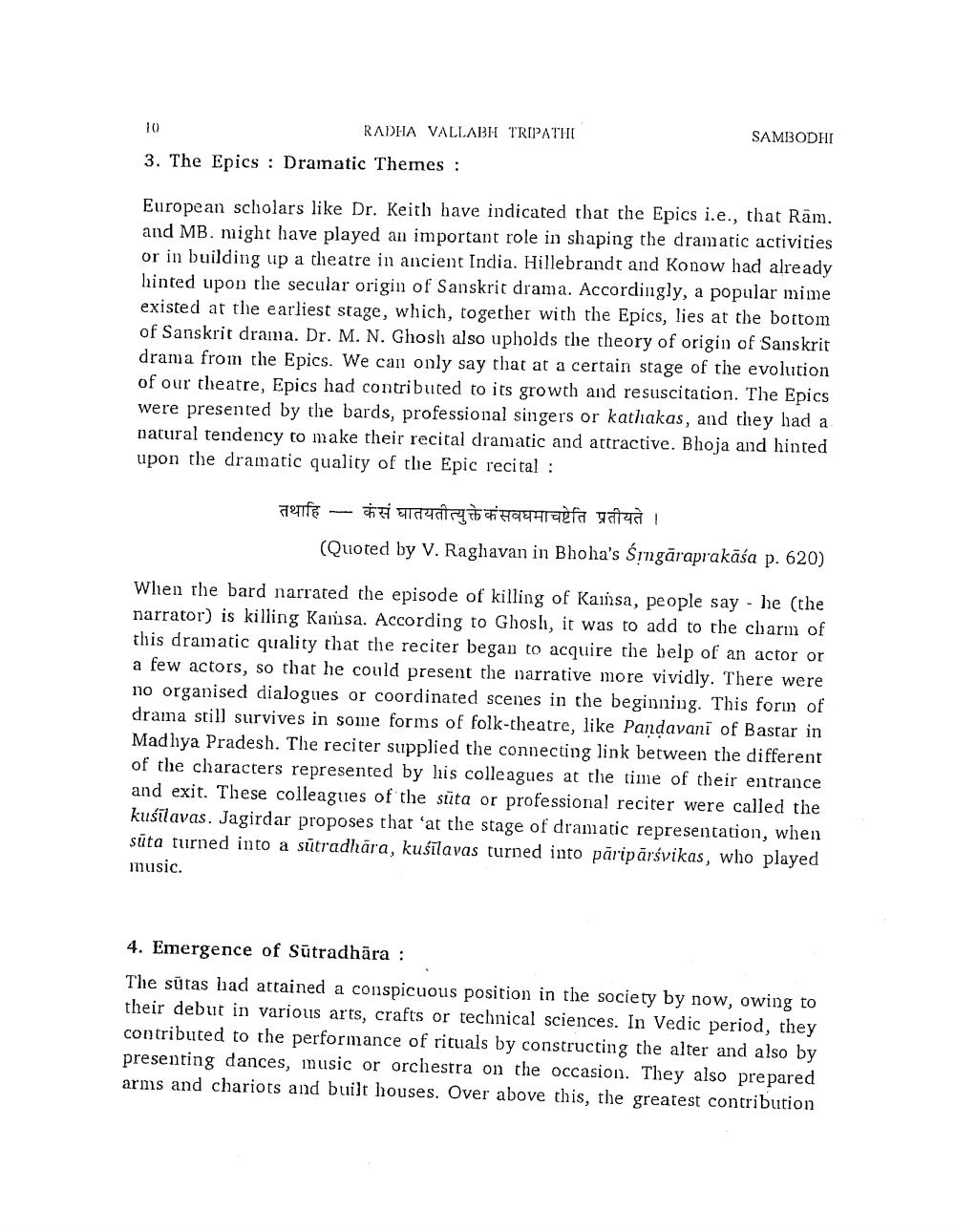________________
RADHA VALLABH TRIPATHI
SAMBODHI
3. The Epics : Dramatic Themes :
European scholars like Dr. Keith have indicated that the Epics i.e., that Rām. and MB. might have played an important role in shaping the dramatic activities or in building up a theatre in ancient India. Hillebrandt and Konow had already hinted upon the secular origin of Sanskrit drama. Accordingly, a popular mime existed at the earliest stage, which, together with the Epics, lies at the bottom of Sanskrit drama. Dr. M. N. Ghosh also upholds the theory of origin of Sanskrit drama from the Epics. We can only say that at a certain stage of the evolution of our theatre, Epics had contributed to its growth and resuscitation. The Epics were presented by the bards, professional singers or kathakas, and they had a natural tendency to make their recital dramatic and attractive. Bhoja and hinted upon the dramatic quality of the Epic recital :
तथाहि - कंसं घातयतीत्युक्ते कंसवधमाचष्टेति प्रतीयते ।
(Quoted by V. Raghavan in Bhoha's Śrngāraprakāśa p. 620)
When the bard narrated the episode of killing of Kamsa, people say - he (the narrator) is killing Kansa. According to Ghosh, it was to add to the charm of this dramatic quality that the reciter began to acquire the belp of an actor or a few actors, so that he could present the narrative more vividly. There were no organised dialogues or coordinated scenes in the beginning. This form of draina still survives in some forms of folk-theatre, like Pandavani of Basrar in Madhya Pradesh. The reciter supplied the connecting link between the different of the characters represented by his colleagues at the time of their entrance and exit. These colleagues of the süta or professional reciter were called the kuśīlavas. Jagirdar proposes that ‘at the stage of dramatic representation, when sūta turned into a sūtradhāra, kuśīlavas turned into pāripārsvikas, who played music.
4. Emergence of Sūtradhāra : The sūtas had attained a conspicuous position in the society by now, owing to their debut in various arts, crafts or technical sciences. In Vedic period, they contributed to the performance of rituals by constructing the alter and also by presenting dances, music or orchestra on the occasion. They also prepared arms and chariots and built houses. Over above this, the greatest contribution




